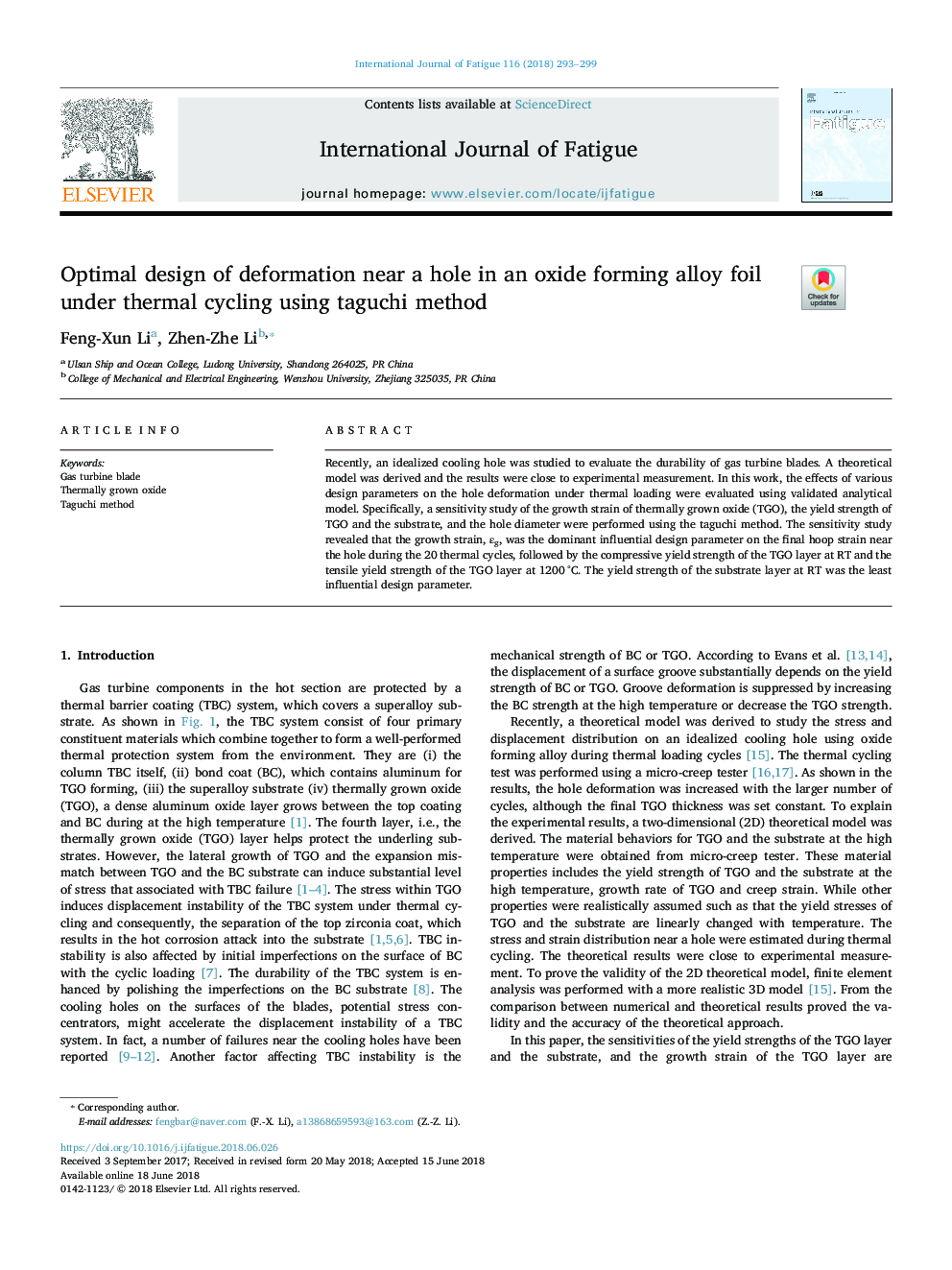| Article ID | Journal | Published Year | Pages | File Type |
|---|---|---|---|---|
| 7171267 | International Journal of Fatigue | 2018 | 7 Pages |
Abstract
Recently, an idealized cooling hole was studied to evaluate the durability of gas turbine blades. A theoretical model was derived and the results were close to experimental measurement. In this work, the effects of various design parameters on the hole deformation under thermal loading were evaluated using validated analytical model. Specifically, a sensitivity study of the growth strain of thermally grown oxide (TGO), the yield strength of TGO and the substrate, and the hole diameter were performed using the taguchi method. The sensitivity study revealed that the growth strain, εg, was the dominant influential design parameter on the final hoop strain near the hole during the 20 thermal cycles, followed by the compressive yield strength of the TGO layer at RT and the tensile yield strength of the TGO layer at 1200â¯Â°C. The yield strength of the substrate layer at RT was the least influential design parameter.
Related Topics
Physical Sciences and Engineering
Engineering
Mechanical Engineering
Authors
Feng-Xun Li, Zhen-Zhe Li,
